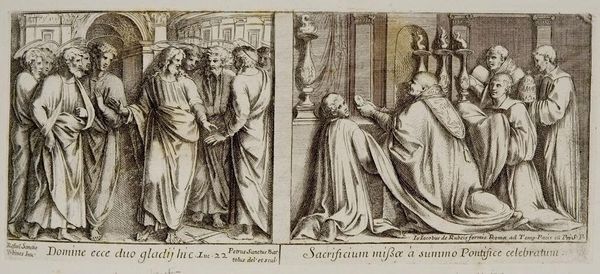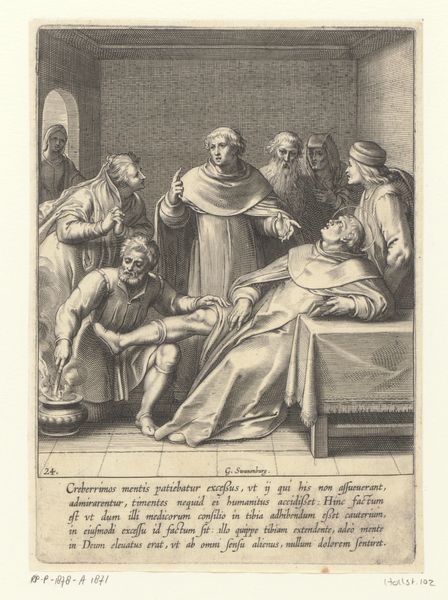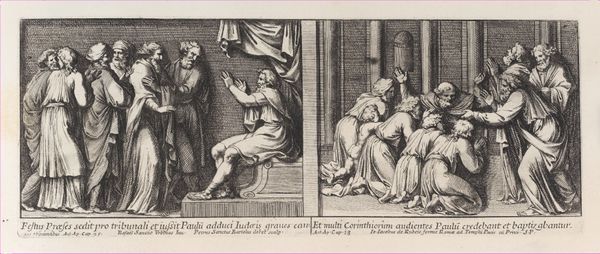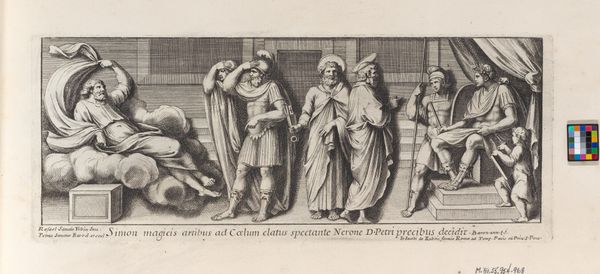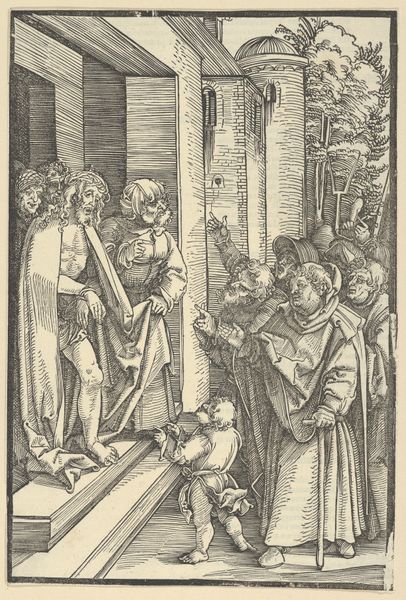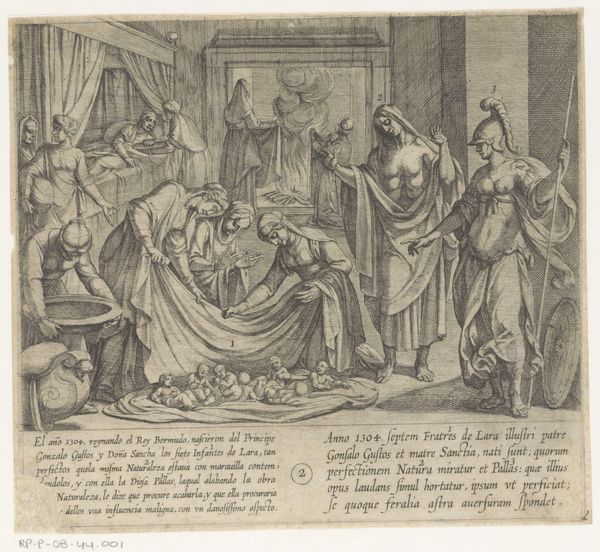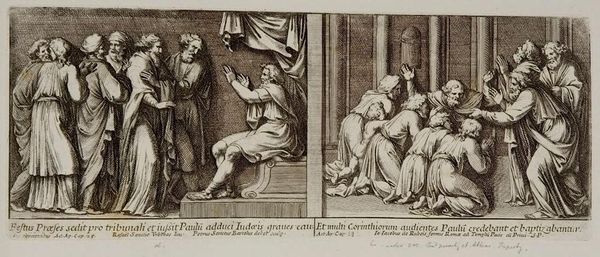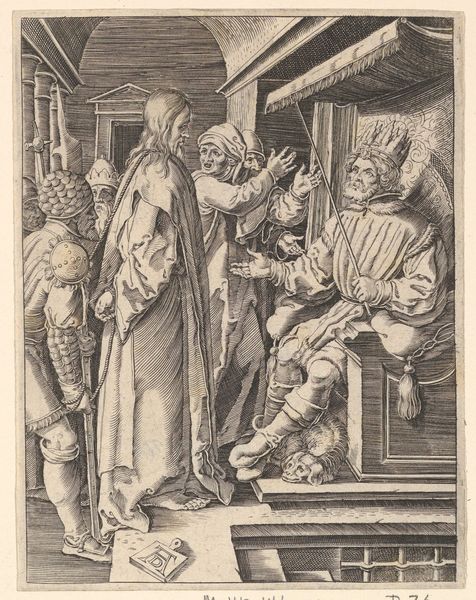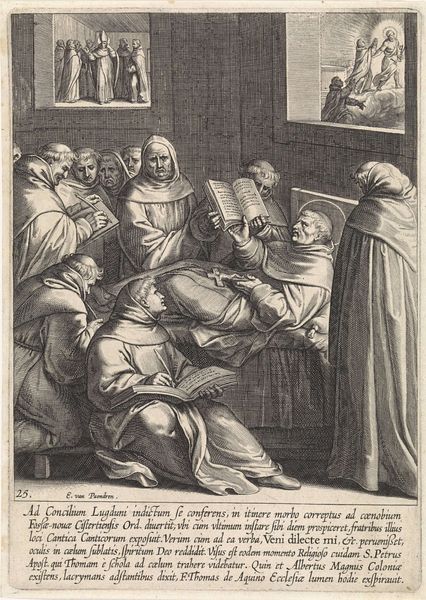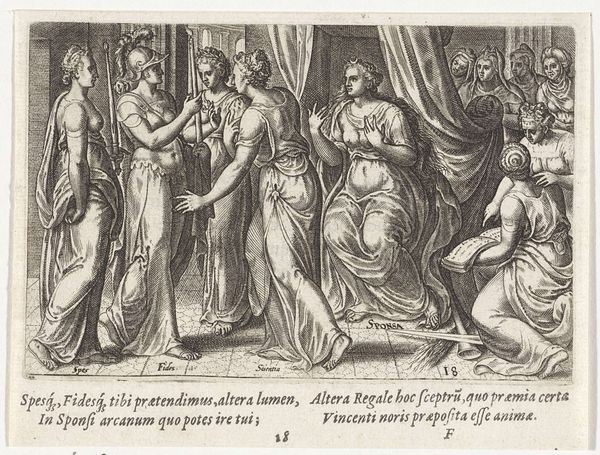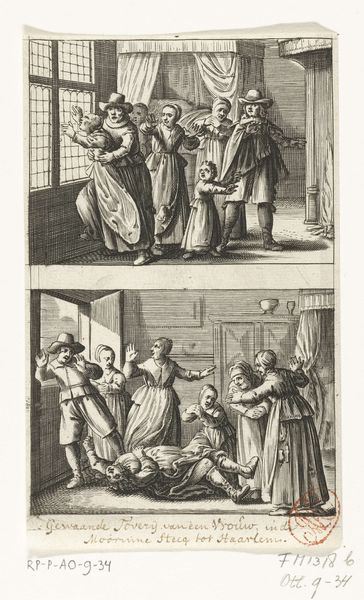
Two Biblical Scenes: The Apostles Showing Christ their Swords at left, after Raphael's Stanza della Segnatura and the Pope Celebrates Mass with Four Priests,after Raphael's Stanza di Eliodoro, from a series of 15 plates depicting Raphael's works for the Vatican stanze and the Sistine Chapel tapestries 1650 - 1670
0:00
0:00
drawing, print, engraving
#
drawing
#
baroque
# print
#
history-painting
#
engraving
Dimensions: Sheet: 4 9/16 × 11 5/16 in. (11.6 × 28.8 cm) Plate: 4 1/8 × 10 1/16 in. (10.5 × 25.6 cm)
Copyright: Public Domain
Curator: This engraving, "Two Biblical Scenes," dating from 1650 to 1670 by Pietro Santi Bartoli, is based on Raphael's Vatican Stanze frescoes. Editor: It’s a rather formal composition, even with the relatively small scale. The rigid linearity, the restricted value range of the engraving medium itself—it creates a striking sense of solemnity and weight. Curator: Consider Bartoli's role. As a printmaker, he isn’t creating an original composition, but translating Raphael’s paintings into a portable, reproducible format. This speaks to the rising importance of dissemination of knowledge and imagery during the Baroque era. Engravings democratized art! Editor: Democratization perhaps, but let’s not forget the compositional rigor. Observe how Bartoli renders Raphael’s scenes within their separate panels, each mirroring and contrasting. The implied violence on the left balances the ritual on the right—a binary playing out in visual terms. Curator: I see the historical implications there. The use of the engraving medium, allowing for mass production, served both propaganda and artistic appreciation. Think of the access people gained to great art without physically journeying to the Vatican. How it informed their understanding and reinforced the Church’s image! Editor: While that context certainly deepens our understanding, consider the visual harmony, even in this scaled-down, printed form. Bartoli’s linework meticulously mimics Raphael’s original, conveying the dynamism of the figures and the architectural spaces they inhabit. This careful reproduction becomes its own artistic act, doesn’t it? Curator: Precisely, Bartoli was an instrumental figure in preserving and broadcasting Raphael's artistic achievements. This engraving showcases the means of distributing and making that level of art accessible in 17th century society. Editor: The way light and shadow work within each panel also merits close inspection. See how light defines the sacredness in the papal mass versus the subdued expressions within the assembly, where swords await their purpose? Curator: A fine point. It demonstrates that materials aren’t merely neutral. They’re carriers of social and political meaning, tools of access and control. Editor: Ultimately, this print offers so much beyond the mere sum of its religious scenes; it is the artist and audience engaging in the exchange. Curator: It reveals a slice of the mechanics through which art, power and faith moved during the Baroque period.
Comments
No comments
Be the first to comment and join the conversation on the ultimate creative platform.
